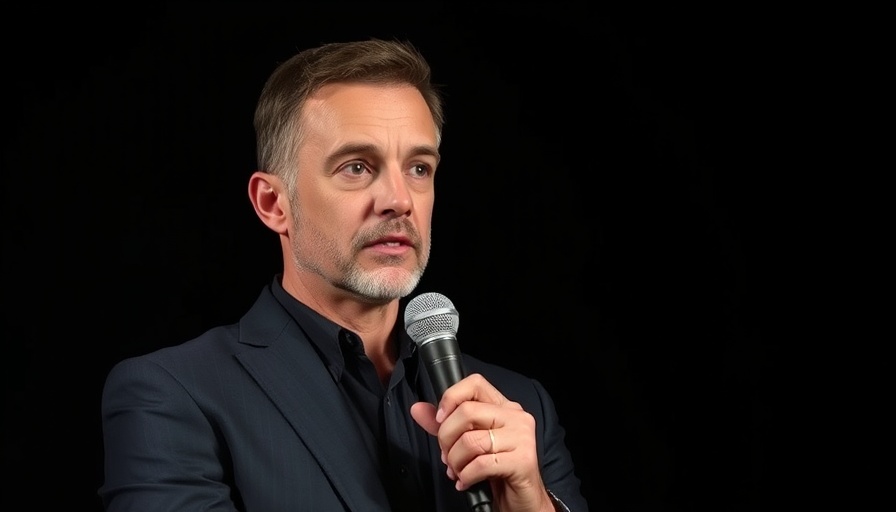
The Future of AI: Insights from Elon Musk's Predictions
In a world rapidly advancing towards technological sophistication, Elon Musk’s predictions for AI development by 2026 provide a fascinating glimpse into what might be on the horizon. While Musk is no stranger to bold forecasts, many of which have not entirely materialized as he predicted, his insights still offer critical points for consideration in an evolving digital landscape.
In 'Elon Musk's Stunning 2026 AI Predictions,' the discussion dives into Musk's vision for the future of artificial intelligence, offering insights that spark deeper analysis on our end.
The Rise of Humanoid Robots: A $38 Billion Market
One of Musk's standout predictions is that humanoid robots will dominate the market, potentially becoming the biggest product worldwide. Backed by a report from Goldman Sachs, it's stated that the humanoid robot market could reach $38 billion by 2035, with significant growth expected in the upcoming years. This projection echoes Musk's assertion that Tesla’s Optimus could surpass the vehicle line in terms of economic impact, emphasizing a shift towards automation in various sectors.
Technological Breakthroughs: Adapting Robots to New Environments
Recent advancements showcased by companies like Pi Zero demonstrate robots' growing capability to adapt to unfamiliar environments. Traditionally, programming robots to perform tasks required exhaustive training; however, innovations that allow for more generalist functionalities could mean we see a future where robots operate efficiently across diverse settings. This shift could fundamentally change job markets, especially in industries that rely on repetitive tasks.
AGI Predictions: When Will We Reach the Tipping Point?
Musk shared his thoughts on achieving artificial general intelligence (AGI) as early as 2026. He emphasized that AGI would perform any cognitive task and suggested we are approaching a time when AI may outperform human intellect. While this aspiration stirs excitement, it also raises questions about the ethical implications and societal shifts surrounding such powerful technology.
The Age of Abundance: A New Economic Paradigm?
A recurring theme in Musk’s speculation is the emergence of an 'age of abundance' prompted by revolutionary AI and robotics. He envisions a future where productivity exponentially increases, supported by humanoid robots, ultimately leading to universal high income. This concept, while utopian, sparks discussions on how it would redefine work, income distribution, and social hierarchies.
Counterarguments: Skepticism Around Overly Optimistic Predictions
Despite the allure of Musk's predictions, skepticism exists regarding their feasibility. The practical challenges of robotics, regulatory hurdles, and societal readiness for such shifts cannot be understated. Moreover, his historical track record of predictions often falling short leaves many wondering about the practical timelines of these advancements.
Impact on Socioeconomic Structures
The implications of such predictions extend beyond technology into the fabric of society itself. As jobs evolve or disappear due to automation, what will this mean for the workforce? The shift toward robots performing low-skilled jobs could potentially amplify wage disparities if not handled with robust policy frameworks.
Inspiration or Caution? Finding a Balance
While Musk’s visions can inspire, they must also be approached with caution. The potential for technologies to shape a more prosperous world is tantalizing but requires careful consideration of ethical standards and safety measures. Furthermore, leveraging such predictions can encourage proactive discussions around preparing society for future changes rather than merely reacting to them.
The Path Forward: What Should We Expect in 2026?
As we brace for the rapid evolution of AI technologies—including the sophistication of humanoid robots and the emergence of AGI—the path forward holds both promise and uncertainty. Will these advancements fulfill Musk’s ambitious timeline and transform our reality, or will we find ourselves grappling with the implications long before the benefits fully manifest? Only time will reveal the answers.
In the conversation about the evolution of AI, it's critical to stay informed and engaged. As experts like Elon Musk outline potential futures of technology, we must also prepare for the challenges and opportunities that lie ahead in the quest for a more integrated world of human and artificial intelligence.
To stay ahead of the ever-changing landscape of AI and robotics, get involved in discussions, follow the latest developments, and consider the broader implications of these technologies on society.
 Add Row
Add Row  Add
Add 




Write A Comment